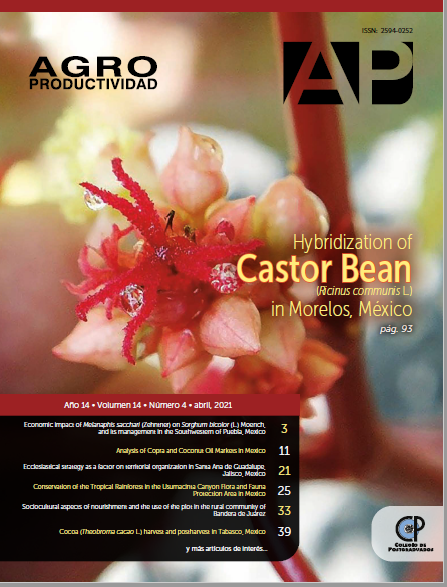Plastic colored paddings and its effect on the foliar micromorphology of husk tomato (Physalis ixocarpa Brot.)
##plugins.themes.bootstrap3.article.main##
Keywords
Physalis sp., stomatic density, stomatic index, epidermal cells.
Resumen
Objective: To assess the effect of colored plastic paddings on the foliar micromorphology of husk tomato (Physalis ixocarpa Brot.).
Design / methodology / approach: A completely randomized statistical model was used with five treatments (black, white, blue, red and green paddings) with three repetitions each, 95% reliability and Tukey's mean test (P ? 0.05). To quantify the normalized difference vegetation index (NDVI) a portable GreenSeeker® sensor was used. To measurement of total soluble solids a Atago® Digital refractometer, the density and stomatal index, length and width of stomata were determined with a Carl Zeiss microscope with an integrated camera and the AxionVisionRel measurement software 4.8.
Results: The results show no significant differences in the NDVI and total soluble solids. The micromorphological variables of adaxial stomatal density and adaxial stomatal index were superior in the blue paddings and exceeded black paddings in 95 % and 50 % respectively. The rest of the micromorphological variables were statistically similar, the yield per plant was statistically similar in the black, white, red and green, while blue paddings yield less.
Study limitations / implications: blue paddings improve micromorphological characteristics, but not the yield of husk tomato crops.
Findings / conclusions: Some of the foliar micromorphological characteristics of the husk tomato crop are modified by colored plastic paddings; however, the improvement in these variables does not necessarily improve the crop yield, probably due to the absorbed and reflected radiation by the colored plastic paddings.

